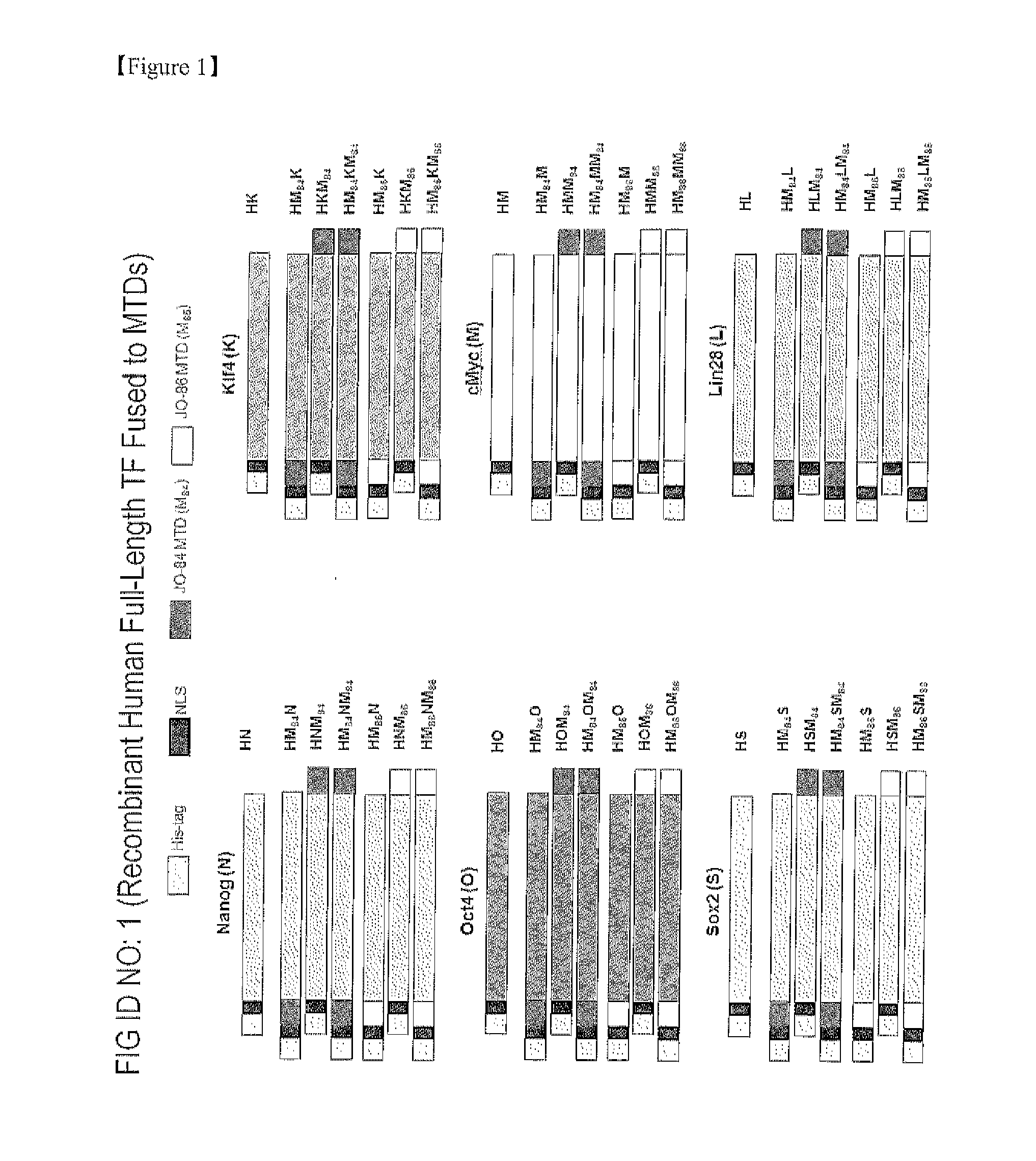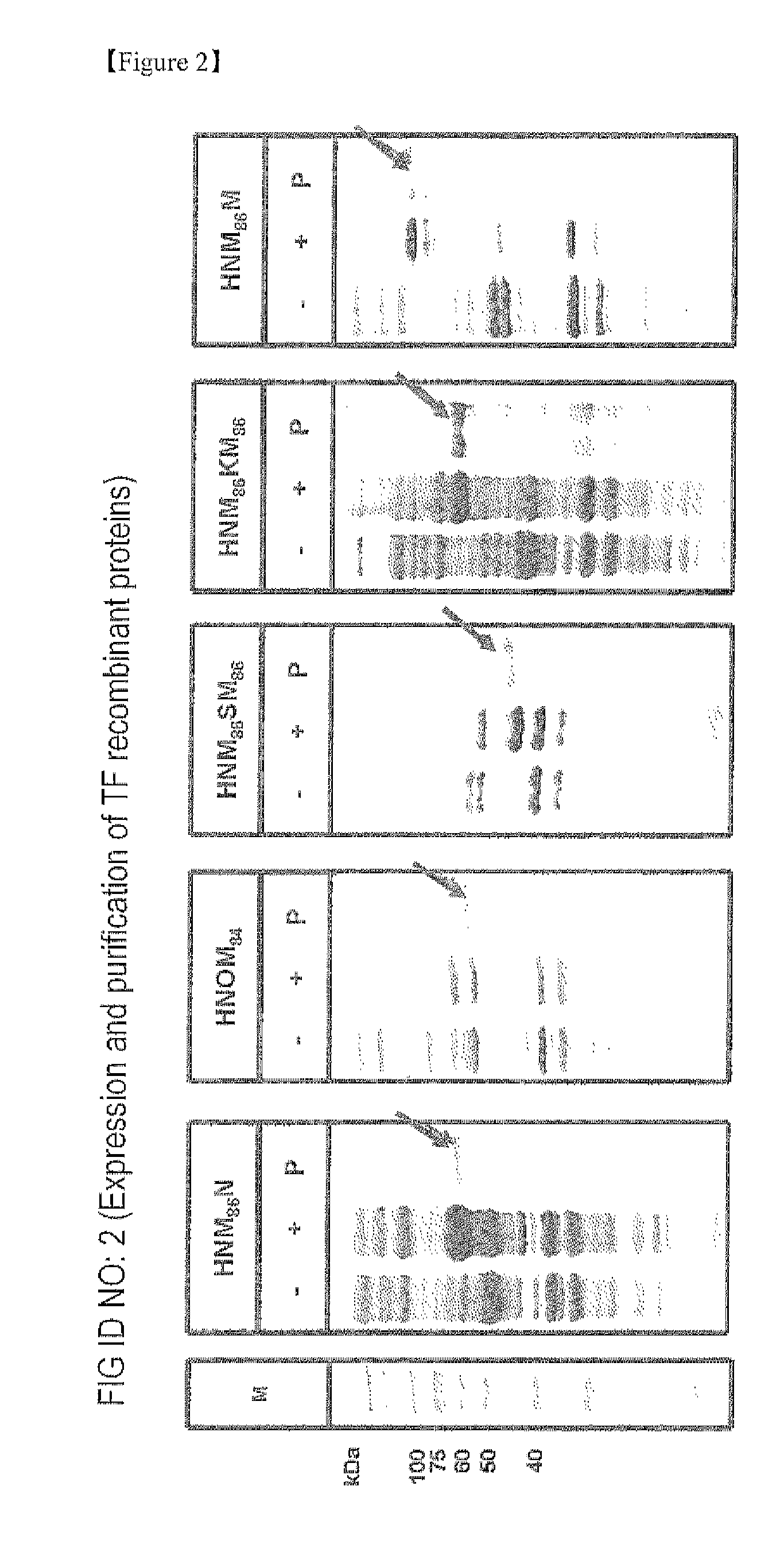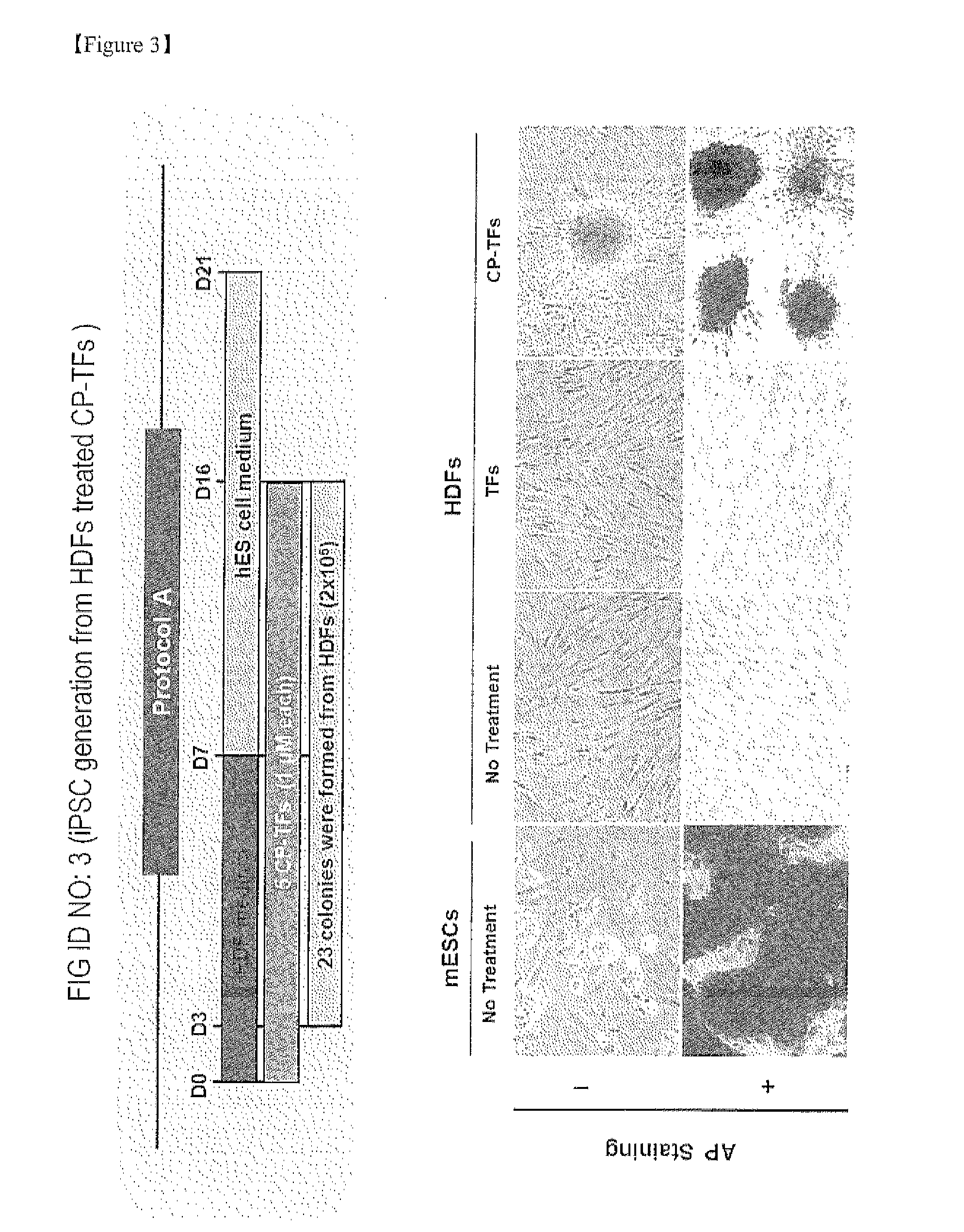Establishment of induced pluripotent stem cell using cell-permeable reprogramming transcription factor for customized stem cell therapy
a technology stem cell therapy, which is applied in the field of reprogramming transcription factor recombinant protein, can solve the problems of low nuclear transfer efficiency, large number of human eggs required, and use of cells derived from human embryos, and achieve safe induced pluripotent stem cells and high yield
- Summary
- Abstract
- Description
- Claims
- Application Information
AI Technical Summary
Benefits of technology
Problems solved by technology
Method used
Image
Examples
example 1
Expression of Recombinant Proteins
[0255]In order to prepare gene constructs of the above-described recombinant proteins, polymerase chain reactions (PCRs) were carried out using a primer pair specifically designed for each construct and human Nanog, Oct4, Sox2, Klf4, c-Myc, and Lin28 cDNAs as a template.
[0256]The forward and reverse primers for amplifying HNNanog have nucleotide sequences represented by SEQ ID NOS: 187 and 188, respectively;
[0257]Those for amplifying HNM84Nanog have nucleotide sequences represented by SEQ ID NOS: 189 and 188, respectively;
[0258]Those for amplifying HNNanogM84 have nucleotide sequences represented by SEQ ID NOS: 187 and 190, respectively;
[0259]Those for amplifying HNM84NanogM84 have nucleotide sequences represented by SEQ ID NOS: 189 and 190, respectively;
[0260]Those for amplifying HNM86Nanog have nucleotide sequences represented by SEQ ID NOS: 191 and 188, respectively;
[0261]Those for amplifying HNNanogM86 have nucleotide sequences represented by SE...
example 2
Purification of the Recombinant Proteins
[0306]Since the cell permeable reprogramming transcription factor recombinant proteins according to the present invention are present in the insoluble fraction as inclusion bodies, 8 M urea was used as a strong denaturing agent to separate these proteins from the insoluble fraction.
[0307]First, the BL21 CodonPlus (DE3) strains transformed with each of the expression vectors of the present invention were cultured in 1 L of an LB medium as described in Example 1 above. Each culture solution was centrifuged to harvest the bacterial cells. The obtained bacterial cells were gently suspended in 20 ml of a lysis buffer (100 mM NaH2PO4, 10 mM Tris-HCl, 8 M urea, pH 8.0) carefully so as to avoid forming bubbles, and homogenized at a low temperature using an ultrasonic homogenizer equipped with a microtip to destruct the cells. Here, the power was set at 25% the maximum power, while a 45 second sonication followed by a 10 second pause was repeated for 7...
example 3
Induction of the Reprogrammed Stem Cells and Alkaline Phosphatase Staining (AP Staining)
[0311]Human dermal fibroblast (HDF) cells were cultured to carry out induction of the reprogrammed stem cells. For an initial 7 days, the cells were cultured at 37° C. in a humidified atmosphere of 5% CO2 in an HDF medium (M106 (Cascade Biologic™)+LSGS (Cascade Biologic™)), and for a subsequent 14 days, the HDF medium was exchanged with a human embryonic stem cell medium (DMEM / F12 (HyClone®) supplemented with 20% KSR (GIBCO®), 2 mM L-glutamin (GIBCO®), 2 mM MEM Non Essential Amino Acid (GIBCO®), 0.1 mM β-mercaptoethanol (GIBCO®), and 0.1% penicillin / streptomycin (GIBCO®)). The cells were treated with the five cell permeable reprogramming transcription factor recombinant proteins at a concentration of 1 μM, and the cells treated with the MTD-free reprogramming transcription factor recombinant proteins at the same concentration were used as a control group. The treatment was conducted for 16 days, ...
PUM
| Property | Measurement | Unit |
|---|---|---|
| optical density OD600 | aaaaa | aaaaa |
| pH | aaaaa | aaaaa |
| pH | aaaaa | aaaaa |
Abstract
Description
Claims
Application Information
 Login to View More
Login to View More - R&D
- Intellectual Property
- Life Sciences
- Materials
- Tech Scout
- Unparalleled Data Quality
- Higher Quality Content
- 60% Fewer Hallucinations
Browse by: Latest US Patents, China's latest patents, Technical Efficacy Thesaurus, Application Domain, Technology Topic, Popular Technical Reports.
© 2025 PatSnap. All rights reserved.Legal|Privacy policy|Modern Slavery Act Transparency Statement|Sitemap|About US| Contact US: help@patsnap.com



